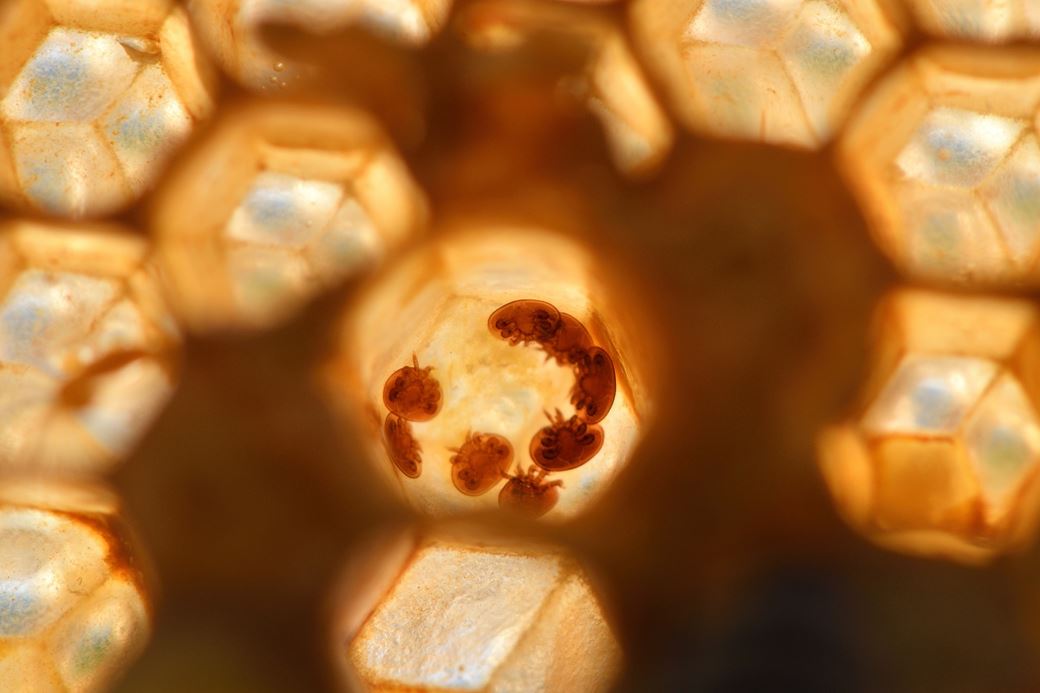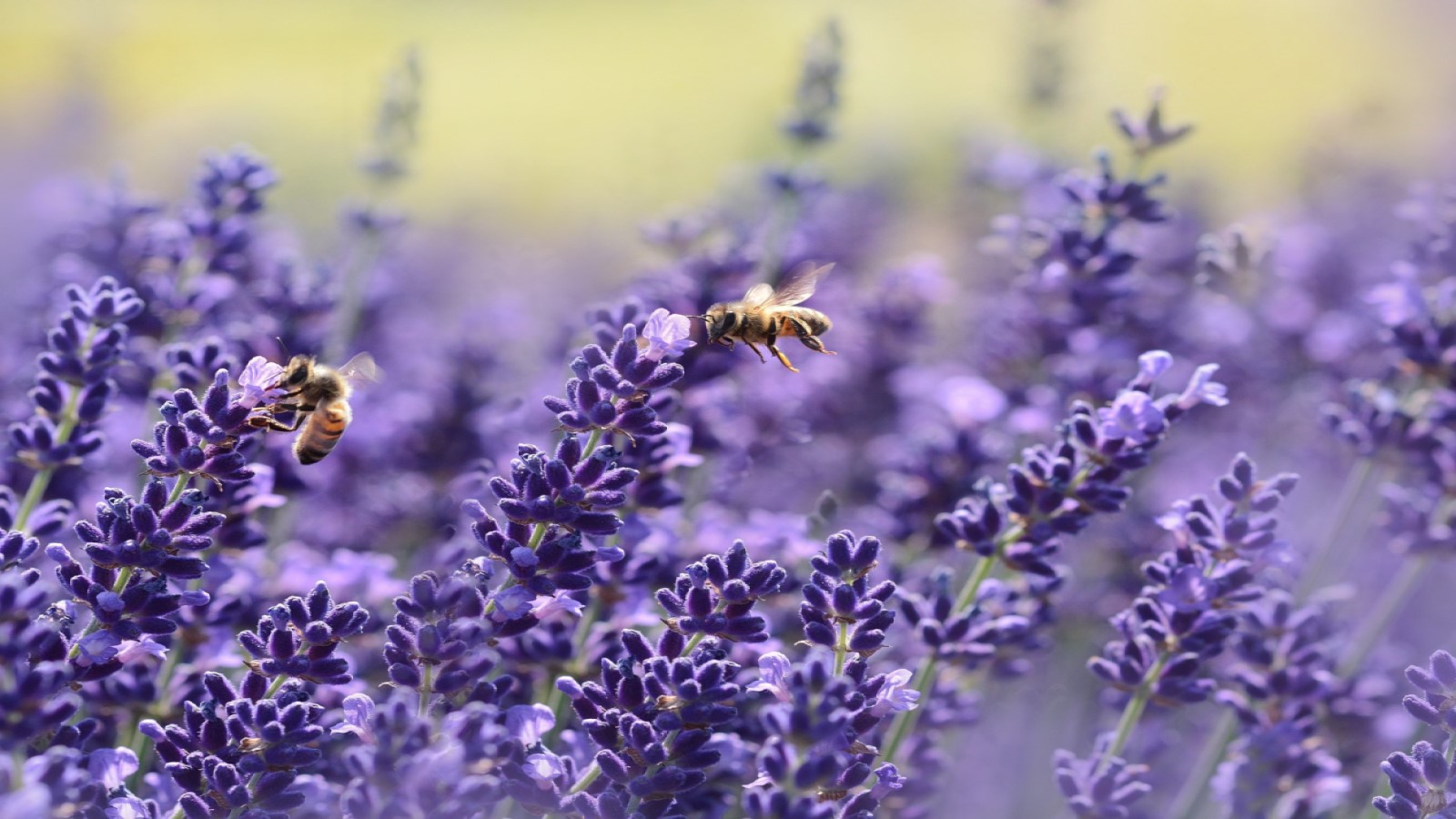
Varroa destructor is a tiny reddish-brown mite that feeds on European and Asian honeybees.
It attaches itself to the bee’s body, severely curtailing its ability to fly, pollinate crops and carry food back to the hive.
Until 2022 Australia was the only large country where Varroa mites had not disrupted honey production and commercial pollination.
But when Varroa arrived in earnest in 2023, they spread too widely, forcing the government to give up its attempts to eradicate the mites.1
For the Australian economy, the insect's invasion is a major problem. The majority of Australia’s AUD80 billion agricultural sector relies on non-native crops that are pollinated by the European honeybee, which was introduced to Australia in the 19th century. The country's almonds, apples and avocados need pollination while the production of crops such as canola, soybeans and sunflowers also increases with the help of bees.
Varroa has the potential to wipe out wild population of European honeybees, whose pollination – a key ecosystem service – provides an estimated AUD8-20 billion a year to the economy.2 In such an event, farmers will have to rely on farmed bees in managed hives for pollination, or shift to other crops.
This means costs paid by farmers for pollination could rise between 30-100 per cent. These changes are also likely to impact business connected to agriculture and agriculture landscapes, such as transport, food, tourism and real estate.
A legal opinion published in late 2023 urged company directors to address nature-based risks, using the impact of Varroa on the Australian honeybee population as an example. A legal opinion is an opinion from lawyers expressing various legal matters to help the recipients address and evaluate legal risks and effects.
“Directors of companies should at least identify the company’s nature-related dependencies and impacts, and consider the potential risks this may pose to the company,” reads the Joint Memorandum of Opinion.3
“Directors who fail to consider nature-related risks could be found liable for breaching their duty of care and diligence.”
It’s not just Australia that is dealing with invasive species, which are identified by scientists to be one of the main direct drivers of biodiversity loss. From brown tree snakes and rice rats to ragweed and water hyacinth, invasive alien species are estimated to have contributed to 60 per cent of recorded global extinctions. The associated economic damages have quadrupled every decade since 1970s to an estimated USD423 billion a year, according to a study by the UN Intergovernmental Science-Policy Platform on Biodiversity and Ecosystem (IPBES).4
A similar legal opinion to Australia's, published in March 2024 for England and Wales, reads: "We do not consider that nature-related risks are conceptually distinct as a matter of legal perspective from any other types of risk that companies may face."5
"Nature-related risks are capable of causing a variety of types of harm to a company [...] We consider that failure by a director to mitigate or properly address the nature-related risks which the company faces can, in certain circumstances, constitute a breach of the duties."

Risks that arise from nature loss include erosion and flooding. A spread of invasive species can lead to disruptions in supply chains, reduce the value of nature-related assets, or cause reputational or legal risks.
The opinion – which outlines an understanding and agreement on specific legal issues and their implications and is then often used to guide business or policy decisions and sometimes structure court cases – follows a similar one to an influential opinion on climate.
The 2016 Hutley Opinion argued company directors were liable for the disclosure and management of climate risk.
Today, most large companies, not just in Australia but around the world, disclose climate related information. We could expect a similar trajectory for nature-related risks.
This is because international agreements aimed at protecting biodiversity – such as the landmark 2022 Kunming-Montreal Global Biodiversity Framework – and related corporate reporting standards developed by the Taskforce for Nature-Related Financial Disclosures and others are pushing companies to not only just disclose nature-related risks but improve their skills in assessing, mitigating, and adapting to these risks.
Such efforts should accelerate since central banks and financial supervisors are also increasingly recognising nature loss as a source of systemic risk to financial systems and economies.6
Biodiversity risks to companies
The Varroa mite and the process of its evolution provide an example of a nature-related risk to companies that is quite distinct from climate risks.
Invasions by alien species, like Varroa, are difficult to reverse; they can spread, evolve and are difficult to eliminate once established. The Varroa mite, and the diseases it spreads, spread in the 1950s in response to the expansion of global trade and the global spread of European honeybees for agriculture.7
Manging nature risks therefore requires understanding how company, industry, and human action are promoting the spread and evolution of these risks.
Careful management can decrease spread and increase adaption, while uncoordinated management can spread risks and increase the damage from these unwanted guest species.
Corporate activity can increase nature-based risks. Rapid advances in science and technology – especially in biodiversity data collection and monitoring – can be expected to expose companies to legal landmines for actions that have increased nature-related risks for others.
Addressing nature-based risks and opportunities requires companies, along with their suppliers, investors, regulators and customers, to cultivate new environmental competencies.
Currently, Australian federal investigators are using DNA to track the source of the illegal bee imports that brought Varroa to Australia. Despite all this, the Varroa mites reveal opportunities.
While Varroa threatens the European honeybee in Australia, there are some 1,600 native bee species in Australia which pollinate some tropical crops. Due to a focus on European honeybees the potential of these species to pollinate crops is largely unknown. Consequently, the invasion of Varroa also presents an opportunity to invest in native ecosystems and non-European bee pollinated crops.8
The Varroa mite is a timely reminder for Australia and the rest of the world that addressing nature-based risks and opportunities requires companies, along with their supplies, investors, regulators and customers, to cultivate new environmental competencies.
For example, companies may want to consider investing in environmental impact assessment and ecological forecasting and building expertise in sustainable resource management to proactively mitigate such risks and identify opportunities.
Business schools and professional training programmes should also evolve to integrate real-world case studies on nature-based risk management into the core curriculum.
Equipping businesses with knowledge and tools will not only enhance their resilience but also contribute to creating an economy that is a steward rather than a destroyer of the biosphere upon which all life depends.
Investment insights
- By Steve Freedman, Head of Research and Sustainability, Thematic Equities, Pictet Asset Management
- Whether it arises from habitat destruction, overexploitation of species, pollution, climate change or the spread of invasive species, biodiversity loss has long concerned scientists and conservationists. But academic research published in the past year shows it has now also started to matter for financial market pricing. Specifically, these studies provide preliminary evidence that listed companies with larger biodiversity footprints have seen their valuations adversely affected around the adoption of the Global Biodiversity Framework in 2021 and 2022.
- Just like climate change has become an increasingly relevant factor for investors to consider over the last decade, biodiversity loss appears likely to follow a similar trajectory.
- The Taskforce for Nature-Related Financial Disclosures (TNFD), an industry body representing financial institutions and companies with assets of over USD20 trillion, has recently launched a set of 14 disclosure recommendations aligned with the Global Biodiversity Framework, and more regulatory changes are sure to follow.






